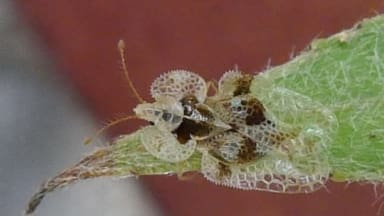
The first sighting in the UK – in London, since 2006 when localised outbreaks were found at nurseries in Bedfordshire. According to Andrea Deol, the FC’s head of plant health, forestry and contingency, whom confirmed the sighting, the Plane Lace Bug is not a regulated tree pest and there is no requirement to take statutory action. At this stage, wider environment surveillance is being conducted to determine the full scale of the (potential) issue.
Native to North America, they feed on the leaves of plane trees, and large populations can cause chlorotic stippling on the upper surface of the leaf, which consequently bronze and drop prematurely. First discovered in Europe in 1964 in Padova, Italy, the bugs have spread throughout mainland Europe with populations as far east as Uzbekistan. Plane Lace bugs feed primarily on plane trees (Platanus spp) but they have been reported on other hosts, such as Broussonetia papyrifera, Carya ovata, Chamaedaphne sp., Fraxinus sp. and Quercus laurifolia.
The Plane Lace Bug has a lacy white exoskeleton and are (adults) are very small (up to 4mm in length) and so may be difficult to see. Adult females can lay several hundred eggs along leaf veins in the warmer months and 1-3 generations can occur in a year. The optimum development temperature for a full life cycle is between 19°C and 33°C though adults have been known to survive winter temperatures as low as -24°C overwintering in loose bark on the trunk.
Many years of Plane Lace Bug damage (at high levels) leaves trees, weakened and vulnerable to opportunistic fungi, disease and environmental influences such as drought. There are potential increased impacts due to climate change in the future.
There are reports that the bugs may occasionally “bite” humans, which is painless and results in a small (1-2 mm) welt which is usually slightly or not at all itchy.
The public are encouraged to report any sightings of the Plane Lace Bug via TreeAlert.

